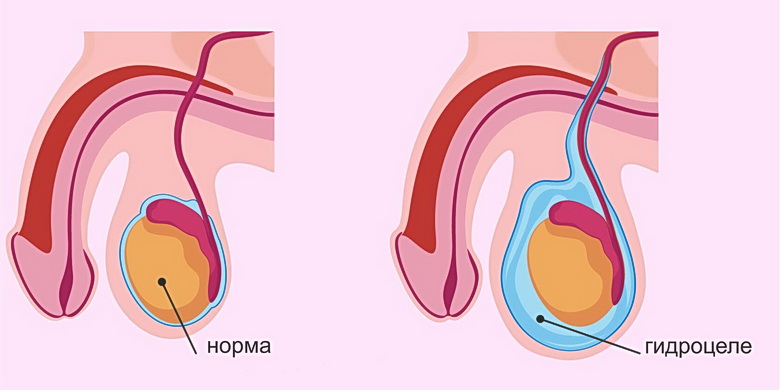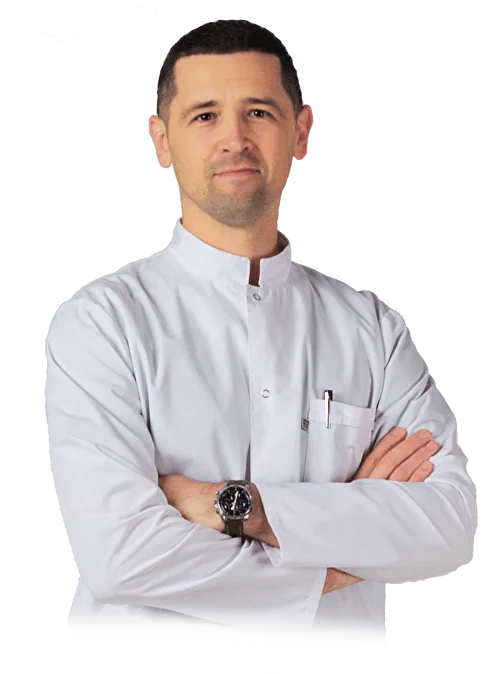
Laser ablation of bladder leukoplakia
20.12.2023BLOG OF DOCTOR SERGII LYULKO
Hydrocele (Dropsy of the testicle)
from first aid to an effective solution to the problem

Dropsy of the testicle (or hydrocele) is a male disease in which fluid retains in the scrotum, and its pathological (excessive) accumulation occurs. The volumes of accumulated watery masses can vary greatly. In addition to the visual enlargement of the testicle, the pathology accompanies discomfort and pain, can cause difficulty in urinating, etc.
If you suspect such a delicate problem as a dropsy of the testicle, contact the urological surgeon Sergii Liulko. An experienced physician and diagnostician accepts patients at the Surgical Solutions Center. Sign up for a convenient day and date in popular messengers or by calling 067 500 02 49.

CAUSES OF HYDROCELE
Dropsy of the testicle can be either a congenital pathology or appear during life in children, adolescents, or adult men. The leading causes of hydrocele include the following:
- trauma to the scrotum or groin area;
- inflammatory diseases of the genitourinary organs, including those caused by severe infections;
- varicocele (varicose veins of the spermatic cord);
- neoplasms;
- complications after surgery;
- congestion in the pelvic area;
- other reasons, including taking certain medications, cardiovascular insufficiency, etc.
HYDROCELE SYMPTOMS
The main sign of dropsy of the testicle is an increase in the size and swelling of the scrotum. Edema can be left or right, and its severity can change during the day (increase or decrease). The size of the testicle can become larger after physical exertion and subside after rest.
Pain with hydrocele, as a rule, is absent, which is why men may not immediately notice the pathology or not rush to see a specialist.
Over time, the manifestations of the disease increase, other symptoms are added to the swelling of the scrotum, namely:
- discomfort when walking or any other physical activity;
- discomfort when urinating (in the scrotum);
- pain in the groin area;
- problems with erection and sexual function;
- general deterioration in well-being, including fever, weakness, etc.
As a rule, the state of health worsens in cases where the dropsy of the testicle is a complication of infectious diseases of the genitourinary system or provokes an acute inflammatory process.
An enlarged scrotum can be a sign of other health problems, including an inguinal hernia or neoplasm. Therefore, you have not postponed a visit to the doctor: make an appointment with Dr. Liulko to undergo the necessary diagnostic examinations!
DIAGNOSIS AND TREATMENT OF DROPSY OF THE TESTICLE
During the initial appointment, the doctor will first get acquainted with the patient's complaints and conduct an examination. To clarify the diagnosis, the doctor can prescribe additional instrumental studies; namely, ultrasound diagnostics, which will confirm or deny the presence of dropsy, will reveal the amount of accumulated fluid.
The tactics of treating hydrocele are due to various factors, including the patient's age, the size of dropsy, and the presence of other diseases.
The revealed pathology in children under two years of age (congenital or acquired), as a rule, requires observation and conservative therapy. For older patients, surgical treatment is recommended - removal of accumulated fluid. Today, minimally invasive procedures are used for these purposes, the Bergman or Winckelmann operation. They are performed with local anesthesia without the need for hospitalization (in a day hospital or with the ability to return home the next day after the manipulations).





